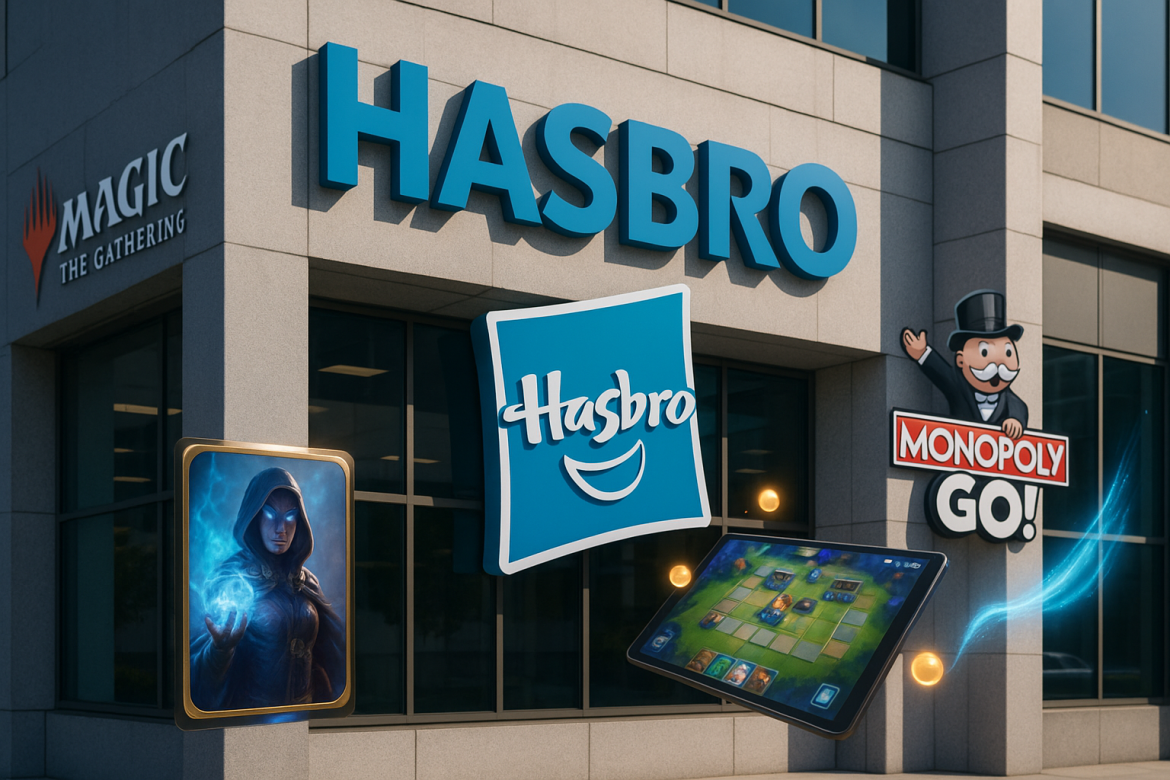Hasbro Inc. reported third-quarter results that beat Wall Street expectations on both earnings and revenue, driven by robust performance in its Wizards of the Coast and digital gaming segments.
The company also raised its full-year revenue and profit forecasts, signaling confidence heading into the crucial holiday season despite ongoing trade and tariff uncertainties.
However, shares of the toymaker were down 2% on Thursday as the company said that US retail order timing caused some temporary weakness in its consumer products segment, offsetting part of the gains in digital gaming.
Earnings beat expectations, digital gaming leads growth
For the quarter ended September 30, Hasbro reported adjusted earnings of $1.68 per share, surpassing analysts’ average estimate of $1.63 per share, according to FactSet and LSEG data.
The result, however, was slightly below last year’s adjusted earnings of $1.73 per share.
Revenue rose 8.3% year over year to $1.39 billion, exceeding analyst expectations of $1.34 billion.
The company posted net income of $233.2 million, with reported earnings per share of $1.64.
Growth was primarily fueled by the company’s Wizards of the Coast and Digital Gaming division, which saw revenue jump 42% compared with a 5% decline in the same quarter last year.
The surge reflects continued demand for Hasbro’s popular titles such as Magic: The Gathering and Monopoly Go, which have become key revenue drivers amid softness in traditional toy sales.
Raised outlook amid tariff uncertainty
Hasbro raised its annual revenue growth forecast to the high single digits, up from its earlier projection of mid-single-digit growth.
It also increased its adjusted EBITDA forecast to a range of $1.24 billion to $1.26 billion, compared with a previous estimate of $1.17 billion to $1.20 billion.
The company’s leadership expressed confidence in its ability to manage risks associated with ongoing trade tensions.
With the US threatening tariffs as high as 100% on Chinese imports, Hasbro said it is accelerating efforts to reduce reliance on manufacturing in China.
The toymaker now plans to bring down its China-sourced production to 30% of total revenue by 2026, compared with an earlier goal of reducing it to 40% by 2027.
“We’re executing our tariff remediation playbook decisively, mitigating risk and protecting profitability,” said Chief Financial Officer Gina Goetter during the post-earnings call.
Earlier this year, Hasbro rolled out a $1 billion cost-savings initiative and implemented job cuts to strengthen its balance sheet and cushion potential hits from tariff-related disruptions.
Analyst sentiment and market performance
Despite the modest share dip following the announcement, Hasbro stock remains one of the stronger performers in the consumer sector this year.
The stock has gained 34.4% year-to-date, while falling 0.9% during the current quarter.
Analyst sentiment toward Hasbro remains positive, with 13 “buy” or “strong buy” ratings and only one “hold” recommendation.
The average 12-month price target on the stock stands at $89, roughly 15.9% above its last closing price of $74.83.
Industry analysts say Hasbro’s digital-first approach is helping the company navigate a shifting retail environment.
“Even with retailers taking a cautious approach to restocking, Hasbro’s core brands — from Magic: The Gathering to Monopoly Go — are doing the heavy lifting,” said eMarketer analyst Zak Stambor.
As Hasbro heads into the year’s busiest shopping period, the company expects momentum in its key brands and gaming franchises to sustain growth, helping offset economic and supply chain headwinds that continue to challenge the broader toy industry.
The post Why Hasbro shares are in red even after lifting annual forecast appeared first on Invezz
